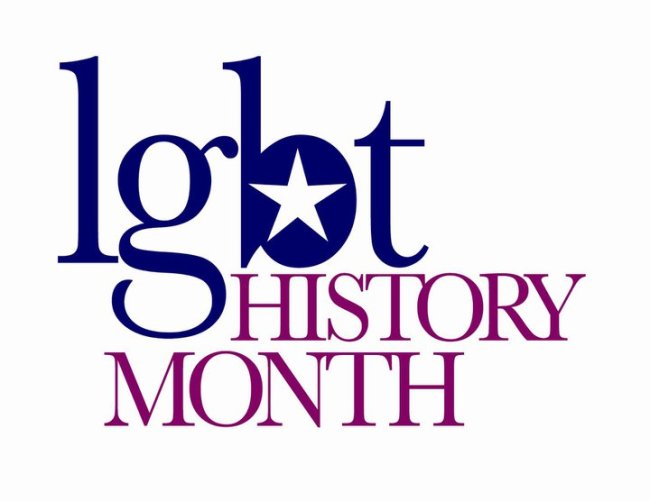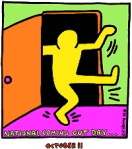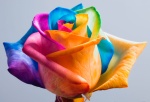Category Archives: Bisexual/Pansexual
Redux: Finding Acceptance from Unexpected Places.
Sometimes, a traumatic incident can prompt surprising events that change one’s life for the better. My previous posts about TERFs and subsequent viral attacks by them has proved to be such an event. It has revealed to me what true acceptance is…and the unlikely places it can come from.
Often when queer people come out, we look to others in our community to support and accept us. But for those of us under the trans* and bi* umbrellas, the general LGBT community is not always a supportive place, and is sometimes an outright hateful one. Many gay and lesbian activists have relied on binary theories about sexuality, sex and gender for legitimacy and advocacy, and those theories have, unwittingly or not, excluded bi* and trans* people. While the community has gradually grown to re-encompass the B and the T (and slowly the I, Q and A), the door of acceptance is still only partially open to those who upset those binaries.
Why do I bring this up? Because I wrote my previous posts regarding TERFs due to frustration and frank incredulity that one group of marginalized people could be so cruel to another. That certain cisgender lesbians, who knew the pain of oppression based on sex, gender and sexuality, could oppress trans* people, especially transwomen, who suffer oppression based on the same factors. And, even worse, that some could support the Pacific Justice Institute in its efforts to bully and oppress trans* children. As a feminist AND someone who is trans* and bisexual (let’s face it – they’re not that friendly to bisexuality either), I felt the need to try to understand and mend that rift.
I thought maybe I could “convince” people into acceptance. But I couldn’t. I learned either people know how to accept one’s identity unconditionally, or they have dogmatic criteria, born from fear, which outweigh love and respect.
Enter Exhibit A, my cousin “Shelly.” Shelly is from a very conservative branch of my family. I mean, the deep South, gun in the purse, fundamentalist Christian, die-hard Republican conservative branch, not the mild New England variety. I have never gone out of my way to out myself to them, as I felt quite certain ostracism and rejection were the only possible outcomes. If they friended me on Facebook, I let them, and figured they’d hide or unfriend me soon enough once they saw all my queer posts. And yet, as I wrestled on Facebook with the wave of hate and derision I suffered from my TERF posts, Shelly contacted me. And what, to my awe, did she say?
That she loved me, just as I was. No matter who I loved or who I was, she loved me. And always would. And hey, here’s my number if you ever need to talk. Any time of night or day. Anyone who can’t love a person for who they are is living in fear, she said. And I was awed. It’s not as if she and I had ever even been close; we hadn’t seen each other in 20 years. But she knew suffering when she saw it, and could not let it pass. She knew how to love and to accept.
I then had to examine my own feelings. Acceptance isn’t necessarily about having a lot in common, sharing oppressions, or fitting into one’s worldview. True acceptance is about basic human decency, making the choice to respect people for who they say they are, even if you dislike it. Even if you don’t believe it. True acceptance is about treating people based on their actions, and not their identities. True acceptance is about recognizing your own fears and pushing past them into love. As corny as that sounds.
I feared that conservative branch of my family. But acceptance does not allow fear, and it has been delightful to watch it melt away on my part. I’ve even postponed my usual trip to Florida to attend a baby shower. I feared the TERFs, but now only their actions concern me. While I will fight their oppression of trans* people tooth and nail, I accept…well, their non-acceptance.
Now if only this concept of acceptance could make the wider rounds of the LGBT(QIA) community. If someone says they are a woman, you accept them as a woman. If they say they are lesbian, you accept them as lesbian. If they say they are bisexual, you accept them as bisexual. If they say they are agender asexual, you accept them as agender asexual. If you have questions, you ask questions (or discover Google). And, above all, you treat people by their actions, not their stereotypes.
It seems pretty basic. And if it can come from places we least expect, then surely it can come from the community that preaches it.
—-
Note: By “trans*” and “trans* umbrella”, I refer to all those whose gender identity or expression may not match their given birth sex, including identities like transgender, transsexual, genderqueer, crossdresser, agender, neutrois, genderfluid, bigender, intersex, androgynous, etc. Similarly, by “bi*” and “bi* umbrella”, I refer to all those who are attracted to persons of more than one sex or gender, including identities such as bisexual, pansexual, fluid, heteroflexible, omnisexual, unlabeled, etc.
The I, Q, and A stand for: Intersex, Queer, Questioning, Asexual and Ally.
Also, I understand asexuals experience similar difficulties to bi* and trans* folks coming out in the LGBT community. I did not include them in the second paragraph, as I am writing from my own experience. The roots of asexual oppression are worthy of a separate post.
LGBT History Month in the Non-Binary Zone
[reposted as part of a Transcending Boundaries’ blog entry]
“What historical LGBTQ figure would you most like to have dinner with and why?…What do you think you talk about and why? What would you eat?”
Lisa Jacobs, President and co-founder, TBI:
“In trying to answer this question, I find myself wavering between two of my favorite queer artists of the past, Victorian poet Walt Whitman and Mexican painter Frida Kahlo. Then again, I never have been much good at choosing just one. Each contributes a unique history and body of work that continue to inform queer identity, and I imagine they would be fascinating lunch companions to boot.
Walt Whitman has long been one of my favorite poets, his books well-loved and well-worn in my collection. His strong, melodious, open praise of the beauty around him, whether in the land or the splendor of the human body, has always instilled within me a sense of pride in mere existence. His experiences as a queer man in an unforgiving time also intrigue me, as do his time spent volunteering at hospitals during the Civil War. How did he find beauty amongst all the ugliness? I would love to sit with him in the open air, open country, with a picnic spread and a view of his human inspiration. I would ask how the progress and tragedies of his time affected his poetry and his love of humanity. I would long to see the world through his eyes, if only for a moment.
Frida Kahlo, however, reminds me of myself in so many ways – a bisexual, genderbending artist, a woman who refused to compromise herself to beauty standards and a person with disabilities. I imagine myself with her somewhere in Mexico, somewhere that brings her peace, sampling food from her home, that beautiful yet tortured place which informed so much of Frida’s work. I would love to ask her how she viewed her gender and its expression, why and what gave her the courage not to shave her unibrow and mustache, and about the great passions that consumed her life.
Through the lens of the past, we better understand our present and future. Learning about the diversity of our queer forebears reminds us that there were once no strict lines in non-conforming sexualities and gender – only ‘perceived as normal’ and not. And that ‘not’ encompassed an entire rainbow.”
Coming Out Non-Binary: What does it mean to you?
[cross posted to Transcending Boundaries, Inc.’s blog 10/11/2013]
Oct. 11th is Coming Out Day, where queer folks of all stripes are encouraged to come out of the closet. Coming out is a process of revelation and storytelling – being true to oneself and communicating this truth to others. Most of us are used to the standard LGBT coming out narrative – you tell your family, friends, coworkers, etc., and then *BOOM*, you’re out of the closet forever. But for the B, the T and the hidden letters of gender, sexual and relationship minorities, coming out of the closet can be a very different process.
For trans* persons in particular, coming out can cost one’s job, family, health care and safety. And for many trans* persons, there is little choice about “being out”. For those who do not “pass” or who change gender presentation or legal sex, the closet can sometimes be a pretty tough place to find.
Bisexual and pansexual persons, on the other hand, often face a constant coming out process as they are routinely mistaken for straight, gay or lesbian. Many face a “double closet”, having to come out both to straight people and the gay and lesbian community, facing possible discrimination and alienation from both sides.
Asexuals have the unenviable task of simply having to explain what asexuality *is* when coming out to most folks.
Genderqueer individuals can face a whole combination of the above – being so gender variant that they have little choice about being “out”, facing a double closet when they can pass for different genders in different situations, or having to explain what terms like genderfluid, neutrois, or agender are in the first place.
Polyamorists can also face serious consequences such as loss of child custody when publicly coming out. Both mainstream and the LGBT community can be hostile to those who upset the dynamic of “only one significant other allowed.”
Intersex persons often come out either to protest past injustices committed against them or to identify themselves as members of a third sex. They bravely choose not to hide, exposing private details of their lives and leaving themselves open to Otherness.
So, dear readers, what have YOUR coming out experiences been like? What prompts you to come out to some people, but not others? Are their some identities/labels you are out about and others you’ve kept in the closet? How do you navigate through multiple identities and levels of outness? How do other aspects of your life, such as ethnicity or religion, affect your coming out process?
Bi/Pan Pride Day Coming Up!
[cross posted from Transcending Boundaries, Inc.’s blog at
http://www.transcendingboundaries.org/blog/208-bi-pan-pride-day-coming-up.html]
This Monday, September 23rd, is Bi Pride Day (aka Celebrate Bisexuality Day), where bisexuals, pansexuals and all other non-monosexuals celebrate being their own flavors of queer. So if you’re bi, pan, fluid or an ally, how can YOU join the festivities?
Locally, events are taking place in Boston and Washington, DC – details can be found at http://binetusa.blogspot.com/2013/09/2013-BiPrideDay-Events-Worldwide.html. Boston will celebrate on Sep. 27th at the Lir Pub with appetizers, games, Unsung Hero and Bi Ally Awards, as well as plenty of other fun. In DC, the first ever OFFICIAL Bi Pride Day will be held, with a forum on ‘Bi at Any Age’, sponsored by SAGE of Metro DC, AMBi, and the DC Center for the LGBT Community.
In addition, a Bi Visibility Day celebration and fundraiser for bi-trans activist Bryan Ellicott will light up the Stonewall Inn in New York City with the B & the T on Sep. 23rd. Details are available at http://www.meetup.com/bisexual-nyc/events/140002902/.
But perhaps some of the most fun parties are the ones that take place in your homes and local pride centers. Plan a party for bisexual/pansexual friends and allies. String up the lights, play the music, and when people ask you why you’re partying on a Monday night, tell them why with PRIDE!
Hang a bisexual flag from your home! Write a blog about bisexuality. List some facts. Write your own personal experience. Dye your hair pink, blue and purple. (Yes, I did that one year. It was fabulous.) Wear your bisexual and queer pins wherever you go, slap a bumper sticker on your car, and leave pamphlets in conspicuous places. (I humbly recommend our bisexual/pansexual /fluid pamphlet at http://transcendingboundaries.org/pdf/bisexuality_brochure.pdf.) Print out bisexual fact sheets at http://binetusa.blogspot.com/2013/03/2013-bisexual-fact-sheet.html. Print out ‘How To Be an Ally’ pamphlets at http://www.biresource.net/Bi_Ally_Brochure.pdf. Buy some bisexual swag at BiNet USA’s store at http://www.zazzle.com/binetusa. (Seriously, they have great t-shirts, buttons and more.)
And if you want to do more than celebrate your ‘more than one’ sexuality, but also actually SUPPORT those making a difference on your behalf, MAKE A DONATION to organizations who are doing real work for bisexual, pansexual and fluid folks. BiNet USA, the Bisexual Resource Center, local bi/pan organizations in your area and, yes, Transcending Boundaries (www.transcendingboundaries.org) are some of the very few organizations, all with limited budgets, trying to bring bisexual/pansexual/fluid issues to the fore and often partnering with other ignored queer groups, like transgender folks, for mutual uplift. Very few large LGBT organizations are paying attention, so we need to be LOUD and VISIBLE ourselves.
So to all the non-monosexuals – let your colors fly high and make next week the best Bi Pride Week ever! And if you have any parties of your own, let us hear about them! We promise we won’t laugh at any goofy pictures. 🙂
Erasure Looks Like This.
[cross-posted to Transcending Boundaries’ blog at http://www.transcendingboundaries.org/blog.html]
Bisexual. Pansexual. Fluid. Pan-romantic. These are just a few of the non-monosexual identities and expressions that exist in our fantastic queer world. All describe people who are attracted to more than one gender/sex. And all describe people who know what it’s like to be Erased. Misrepresented. Marginalized. Ridiculed. Not only by mainstream society, but by their queer allies in the gender and sexual minority communities. And lest anyone should think that’s a trivial matter, it’s not. It has some serious goddamn consequences.
I am bisexual. Or pansexual. Both labels suit me. If you stick ten people like me in a room, statistical odds are that four of us have seriously considered or attempted suicide. I am one of them. This suicidality rate is higher than for gays, lesbians or heterosexuals. (I’m not aware of any data on asexuals.) Similarly, the rates for poverty, intimate partner abuse, rape and sexual abuse, depression and other mood disorders, and poor overall health are also higher than for gays and lesbians. Bisexuals are paid less and less likely to be out to health providers. Or coworkers. Or family. Or anyone. And it’s hard to blame them, when coming out earns us monikers like traitor, indecisive, deluded, attention seeker, greedy, slut and fake.
With bisexuals et al. experiencing such adverse effects distinct from gays and lesbians, you’d think there must be some serious effort to root out and address the cause, right? Nope. Between 1970 and 2010, grants for the bisexual population totaled about $84,000. In comparison, grants for gay men and lesbian populations totaled about $64,000,000 and grants for transgender/gender nonconforming populations totaled about $16,000,000. And between 2008 and 2012, only $5,000 in grants was awarded to bisexual-specific projects or organizations. Additionally, no major national LGBT organization currently has a project geared toward the bisexual/non-monosexual population.
Not a one. $5,000. Is that really all we rate? I’m not ready to accept that the constant, daily erasure of our sexual orientations, and the isolation and the pain that this causes, is somehow reasonable. Four out of ten of us decide at some point our lives aren’t worth living. Is that not enough?
Of course, many of us in the Transcending Boundaries community wear other identities, like transgender and genderqueer and polyamorous and intersex, etc. I also identify as genderqueer, intersex and poly. How do these OTHER marginalized identities intersect with my bisexuality?
Well, some days it feels like I’m erased almost into oblivion. My sexuality is not real, because I am not gay or straight. My gender is not real, because I am not male or female. My physical sexual attributes are considered a deformity. For those of us who straddle these boundaries, who live in the in-between, we cannot just tackle one aspect of our being and ignore the others, or we will never be seen for the complex, beautiful beings that we are. And we deserve to be seen. Lately I have gratefully watched the trans*/GNC community blossom. But I have also watched the words “gay, lesbian and bisexual” turn into “gay, lesbian and transgender” in media stories and wondered…is it really that hard to include us all? Did I fight so hard for trans* inclusion only to watch bi inclusion pop out the other side? I can’t do that. I can’t choose between the two.
It is time for the bisexual/pansexual/non-monosexual community to become not only visible, but loud. It is time for the greater queer community to recognize that the struggles specific to biphobia and bisexual invisibility have very real, damaging consequences. We cannot afford to be an extraneous letter in the LGBT acronym or a polite afterthought. At least, four out of ten of us certainly can’t.*
[*If that ‘four out of ten’ reference reminds you of the 40% attempted suicide rate among trans*/GNC people – bingo. Neither the B nor the T can afford to be silenced, hence the alliances Transcending Boundaries works to build. But those are two subjects for other posts.]
Sources:
Bisexual Invisibility: Impacts and Recommendations (San Francisco Human Rights Commission)
http://dl.dropboxusercontent.com/u/19907257/biinvisibility-FULLfinalforHRC.pdf
BiNet USA
http://binetusa.blogspot.com/2013/03/2013-bisexual-fact-sheet.html



